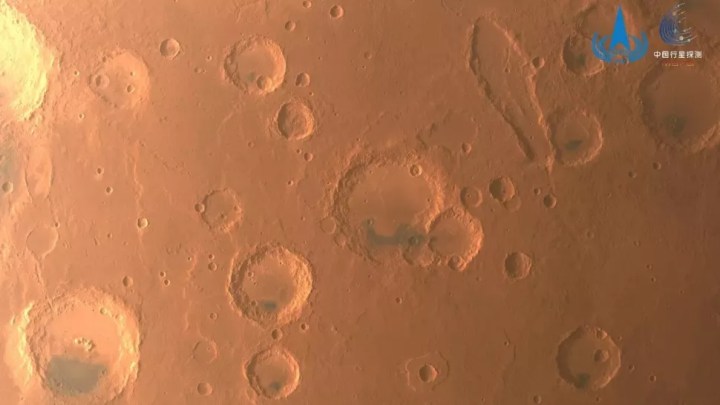The Chinese Tianwen-1 orbiter has completed imaging the entire surface of Mars, the China National Space Administration (CNSA) announced this week. The orbiter, which traveled to Mars along with the rover Zhurong, arrived at Mars in February 2021 and has been collecting images of the planet’s surface as part of a global survey.
During its time on the red planet, the Tianwen-1 orbiter made 1,344 passes around the planet and made observations with scientific instruments including cameras, magnetometers, spectrometers, and a radar instrument. The orbiter has been in operation for 706 days, and during that time, the CNSA says it imaged the whole surface with its medium-resolution camera.

Images collected by the orbiter were shared by space journalist Andrew Jones on Twitter and show a selection of views of the red planet’s surface taken from orbit — including impact craters and other terrain features.
Tianwen-1 has completed a global imaging of Mars with its medium resolution camera after orbiting the Red Planet 1,344 times. Tianwen-1 launched in July 2020 and entered Mars orbit in Feb. 2021. Images: CNSA/PEChttps://t.co/LBNqejfu9W pic.twitter.com/UvW9WGjp0Y
— Andrew Jones (@AJ_FI) June 29, 2022
The Tianwen-1 mission consists of three parts: the orbiter that took these images, the rover Zhurong, and a lander that carried the rover to the surface. The rover has been busy as well, traveling nearly 2,000 meters across the planet in the Utopia Planitia region. However, it is getting colder in this area, so the rover was switched into dormant mode in May and will be reactivated in December once the temperatures warm up.
Both the rover and the orbiter have now completed their primary missions, but as both are still working, they will continue to be used for future exploration. CNSA says it has collected 1,040GB of data from them so far, including orbiter data that has been shared with other space agencies like NASA and the European Space Agency (ESA).
Some commentators have argued this sharing of data is suggestive that the famously secretive CNSA is becoming more open about its work, as demonstrated in a white paper released in 2021, which laid out some of the past and future plans of the agency. The CNSA also announced that its Zhurong rover recently performed an in-orbit relay communication test with an ESA orbiter, the Mars Express spacecraft.
Editors' Recommendations
- NASA video maps all 72 flights taken by Mars Ingenuity helicopter
- NASA needs a new approach for its challenging Mars Sample Return mission
- NASA says goodbye to Mars helicopter Ingenuity after an incredible 72 flights
- NASA has lost communication with the Ingenuity Mars helicopter
- See the passing of a day on Mars with the Curiosity rover



